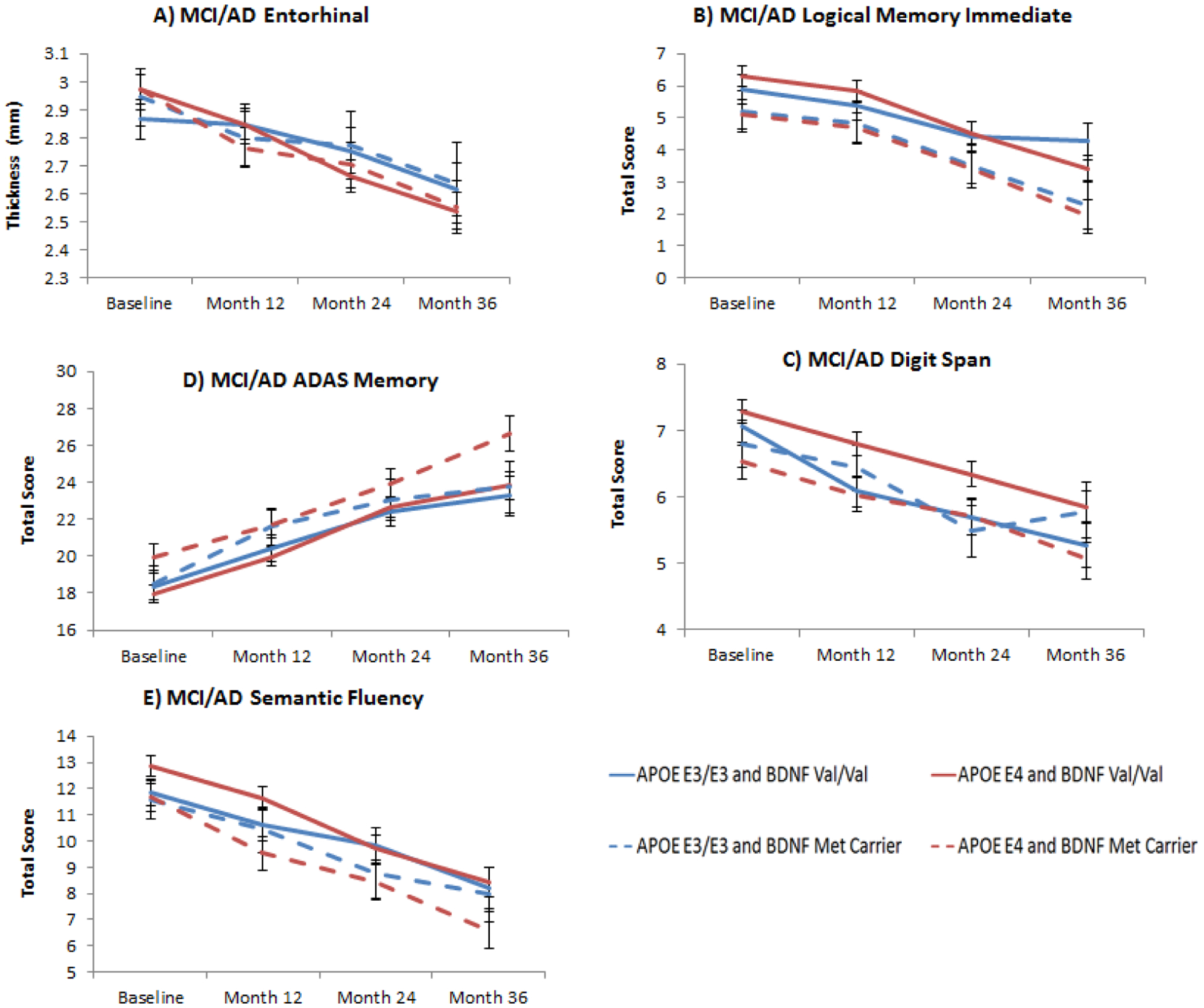Figure 2. APOE and BDNF interaction effects in entorhinal thickness and cognitive measures in MCI/AD patients.

Figure 2A: Least square means from longitudinal mixed models of entorhinal atrophy over 3 years in MCI/AD according to APOE (E3/E3 and E4 carriers) and BDNF (Val/Val and Met carriers) interaction subgroups (BDNF×TIME effect: F3,182= 3.26, p= 0.06); Figure 2B: Least square means from longitudinal mixed models of logical memory immediate scores in MCI/AD according to APOE (E3/E3 and E4 carriers) and BDNF (Val/Val and Met carriers) interaction subgroups (BDNF main effect: F1,134= 5.63, p= 0.05); Figure 2C: Least square means from longitudinal mixed models of working memory (digit span) showed that APOE E4 and BDNF Met carriers were also more impaired compared to APOE E3/E3 and BDNF Val/Val (BDNF main effect: F1, 134= 4.95, p= 0.06) Figure 2D: Least square means from longitudinal mixed models of ADAS Memory score showed that BDNF Met carriers had higher scores (higher scores correspond to worse performance) compared to Val homozygotes in the APOE E4 subgroup compared to APOE E3/E3 (BDNF main effect: F1,134= 5.72, p= 0.05); Figure 2E: Similar result for least square means from longitudinal mixed models of semantic fluency, where BDNF Met carriers showed lower score compared to Val/Val in the APOE E4 subgroup compared to APOE E3/E3 (BDNF main effect: F1,134= 5.53, p= 0.05). All p values have been FDR corrected. Error bars represent standard errors of the mean (SEM).
